APAH Unit 5: Early Renaissance
1/67
There's no tags or description
Looks like no tags are added yet.
Name | Mastery | Learn | Test | Matching | Spaced |
|---|
No study sessions yet.
68 Terms

The Lamentation
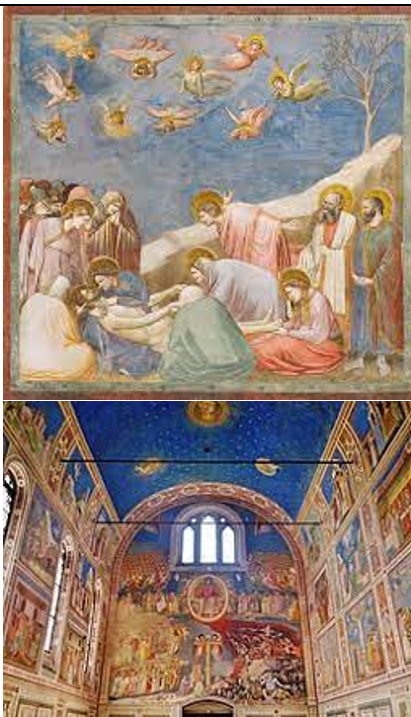
The Lamentation (culture & location)
Early Renaissance; Arena (Scrovegni) Chapel, Padua, Italy

The Lamentation (creator, date, & material)
Giotto; 1305-1306 CE; fresco
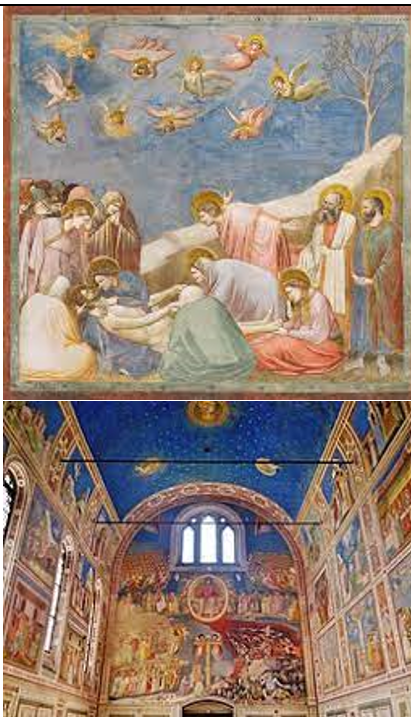
The Lamentation (use & facts)
chapel decor
figures standing in real space & all react with sadness or shock
modeled (3D) figures
scenery & mountain point of Christ’s face
bare tree = tree of life?
Giotto is famous for his intense ultramarine (made from lapis lazuli) & rounded figures

Pazzi Chapel
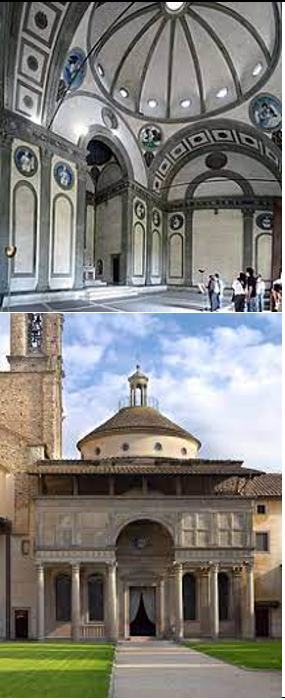
Pazzi Chapel (culture & location)
Early Renaissance; Basilica di Santa Croce, Florence, Italy
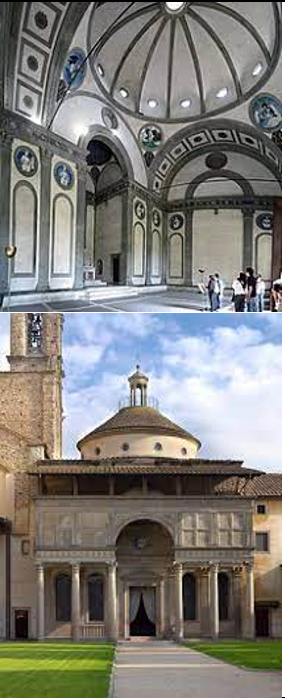
Pazzi Chapel (creator, date, & material)
Filippo Brunelleschi; 1429-1461 CE; gray sandstone & terracotta
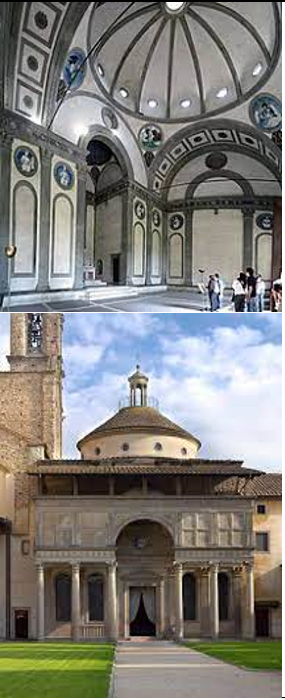
Pazzi Chapel (use & facts)
family chapel
patrons were Pazzi (rivals of Medici)
attributed to Brunelleschi (disputed)
dome finished after his death, outside left incomplete
mirrors Renaissance ideals of geometry & symmetry
Triumphal Arch in façade = power & glory to Florence
classical elements = Corinthian columns & barrel vault
white & gray tones for pietra serena (“serene tone”)
terracotta circular roundels containing Christian imagery = Della Robbia
humanism in architecture
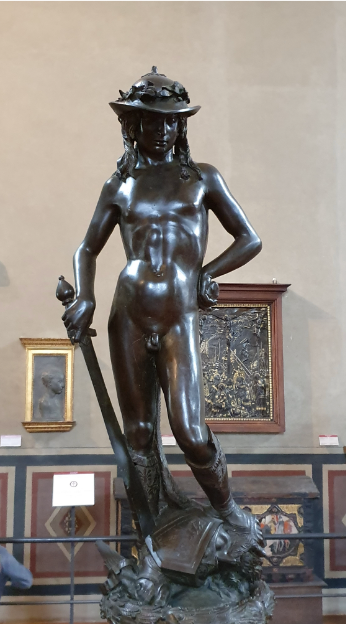
David
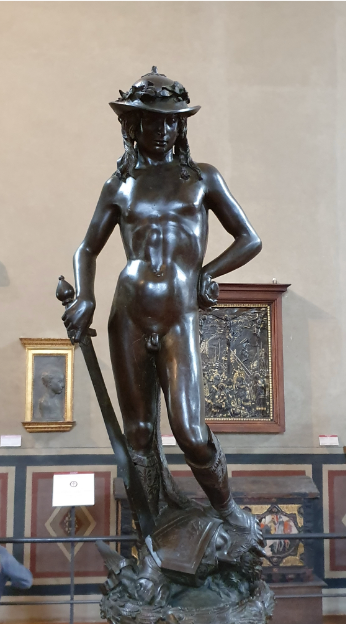
David (culture & location)
Early Renaissance; Florence, Italy

David (creator, date, & material)
Donatello; 1440 CE; bronze
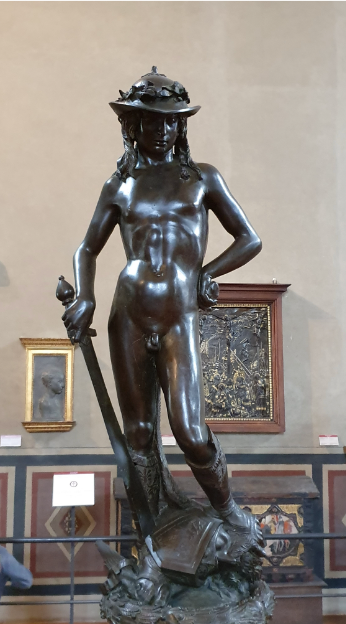
David (use & facts)
first nude since classical times
calm, serene, nude, youthful, & S curve = classical
to be seen from all angles
exaggerated contrapposto of body
head down = humility?
androgynous figure
not for public view, housed in a garden in the Medici Palace, commissioned
contemporary headgear & laurel leaf (Greek)
symbol of Florence’s victory over Milan & of the Republic
erotic sense of touch
effeminate qualities = adolescence

Madonna and Child wiht Two Angels
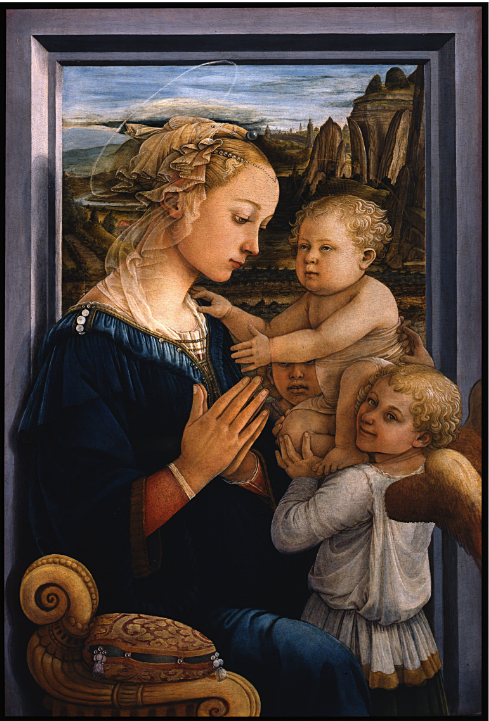
Madonna and Child wiht Two Angels (culture & location)
Early Renaissance; Florence, Italy
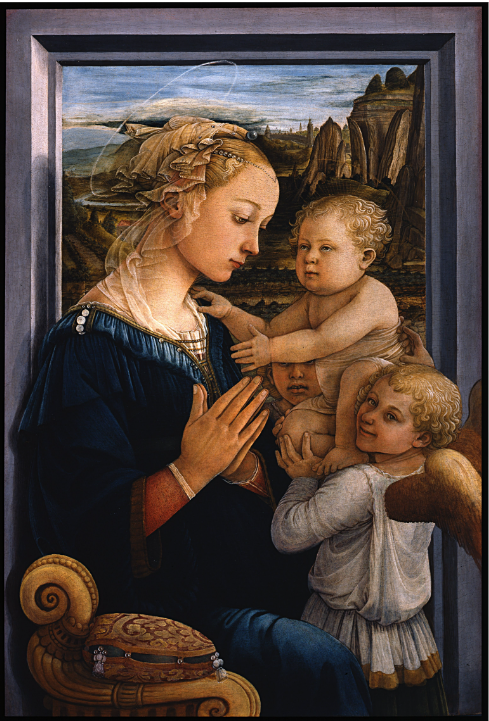
Madonna and Child wiht Two Angels (creator, date, & material)
Fra Filippo Lippi; 1450-1465 CE; tempera on panel
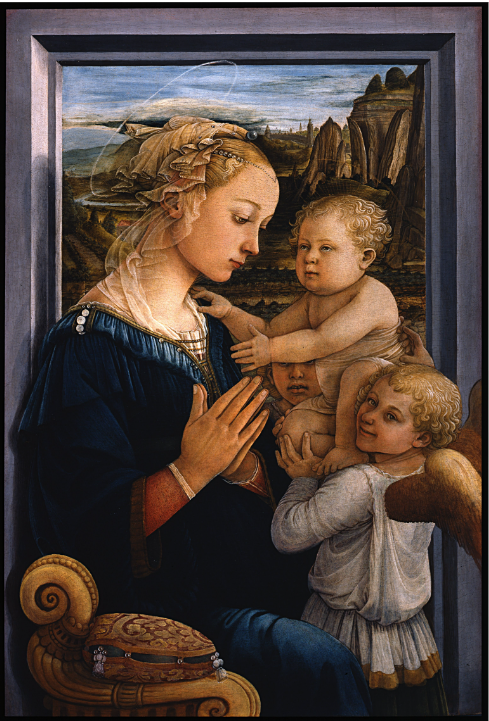
Madonna and Child wiht Two Angels (use & facts)
found in a window in Florentine home for display
variation of theme painted by many
halos almost disappear
transparent fabric around Mary
figures completely human
Mary & Jesus lost in thought but closer angel connects with viewer (mischievous?)
solid forms from Masaccio & transparent cloth passed on to Botticelli
Mary as young mother
landscape = rock of church & heavenly Jerusalem
pearls in headdress & pillow = Immaculate Conception
Mary modeled after Lippi’s scandalous lover
humanizing sacred theme-
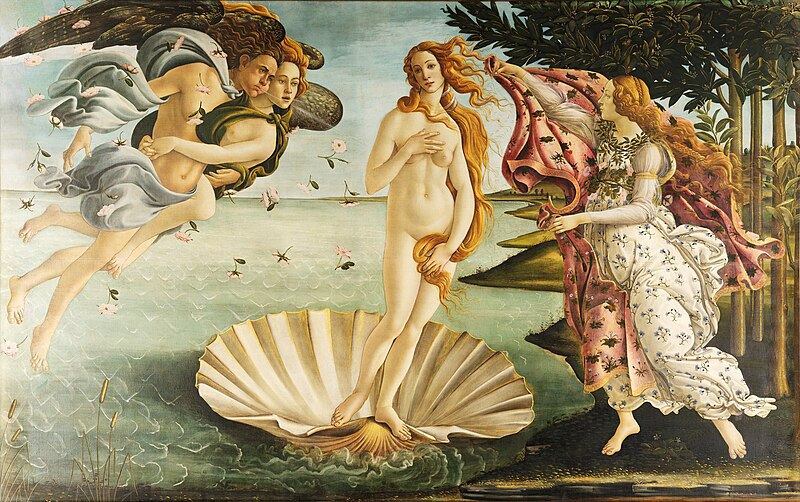
Birth of Venus

Birth of Venus (culture & location)
Early Renaissance; Florence, Italy
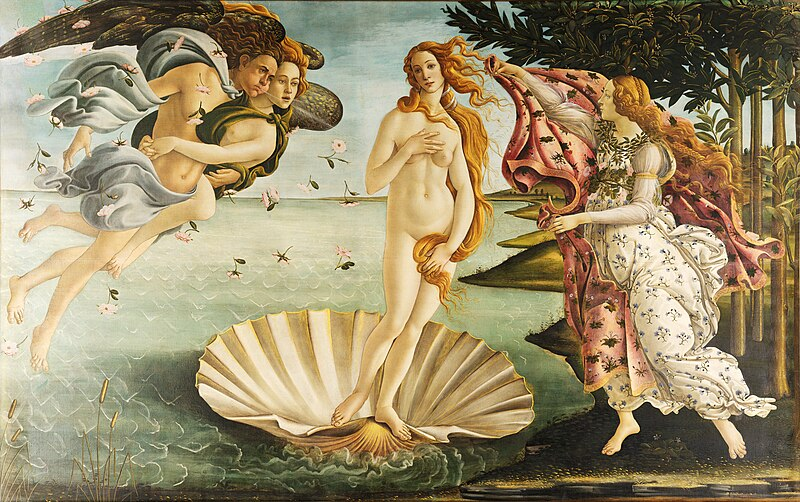
Birth of Venus (creator, date, & material)
Botticelli; 1484-1486 CE; tempura paint on canvas

Birth of Venus (use & facts)
commissioned by Medici family for display in country villa
Botticelli = hair & drapery
Neo-Platonism = all our history is one history intertwined (Greek & Roman myths are actually the Bible)
Venus = Mary (Virgins), John the Baptist = Spring, Winds = Angels
Venus & west wind on one level
delicate lines, pale, floating figures = ethereal
symbolic gold hair
nature is stylized (waves & falling flowers)
one of the first works on canvas
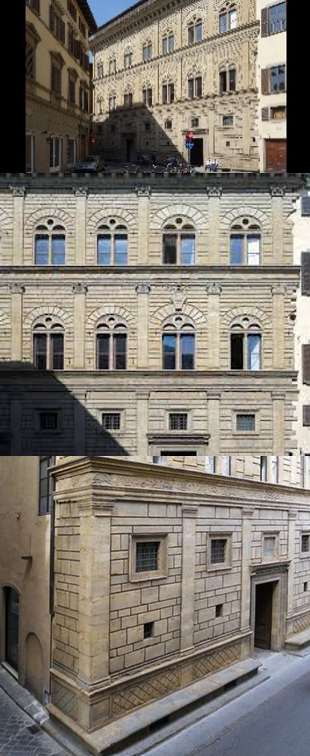
Palazzo Rucellai
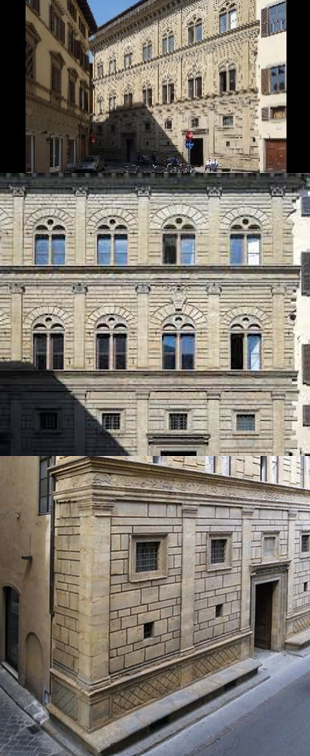
Palazzo Rucellai (culture & location)
Early Renaissance; Florence, Italy
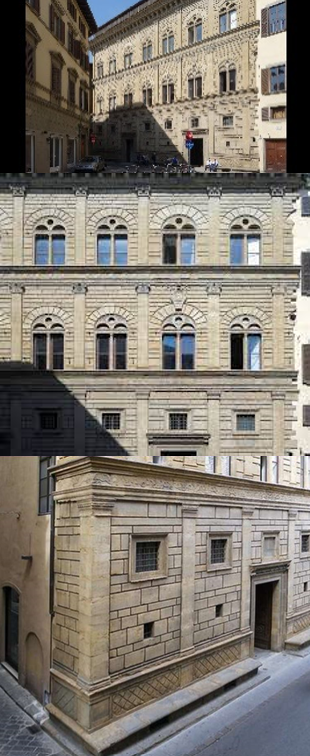
Palazzo Rucellai (creator, date, & material)
Leon Battista Alberti; 1450 CE; stone masonry
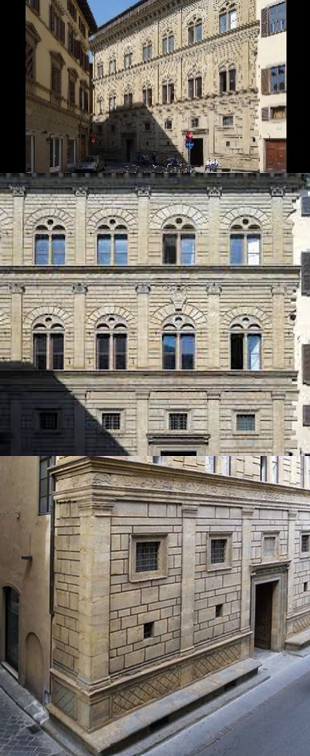
Palazzo Rucellai (use & facts)
house
façade divided into 3 tiers by entablatures decreasing in height from bottom to top
pilasters of different column order
square windows, portals, & crosshatched stone
arcades with round arches surround windows
crowed by projecting classical cornice
similar to Colosseum (column & architecture)
Roman reference = arcades & emphasis on classical elements
included Rucellai family designs (sails = crest)

Sistine Chapel

Sistine Chapel (culture & location)
High Renaissance; St. Peter’s Bascilica, Rome, Italy

Sistine Chapel (creator, date, & material)
Michelangelo; 1508-1512 CE; fresco

Sistine Chapel (use & facts)
chapel celing decoration
know Adam & Eve, Birth of Adam, the Great Flood (the Deluge), & Delphic Sybyl
blend of Neo-Platonism & Christianity
triangles ancestors of Christ
between paired pillars are sages of antiquity
corners are Old Testament stories
nudes unite work

Last Supper

Last Supper (culture & location)
High Renaissance; Santa Maria della Frazie, Milan, Italy
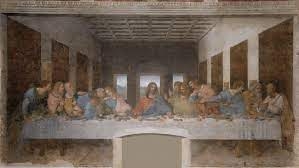
Last Supper (creator, date, & material)
Leonardo da Vinci; 1494-1498 CE; oil & tempera on plaster
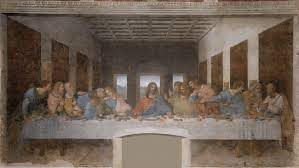
Last Supper (use & facts)
monastery refectory (cafeteria) decoration
experimentation with pigment (oil & tempera) resulted in deterioration of work
Christ’s head vanishing point
new = 1 point perspective & creation of depth
door later cut into panel
commissioned by Sforza family
only da Vinci work that remains in situ (in place)
dramatize the moment Jesus says “one of you will betray me”
chiaroscuro, foreshortening, natural light, emotion, poses & interactions

School of Athens
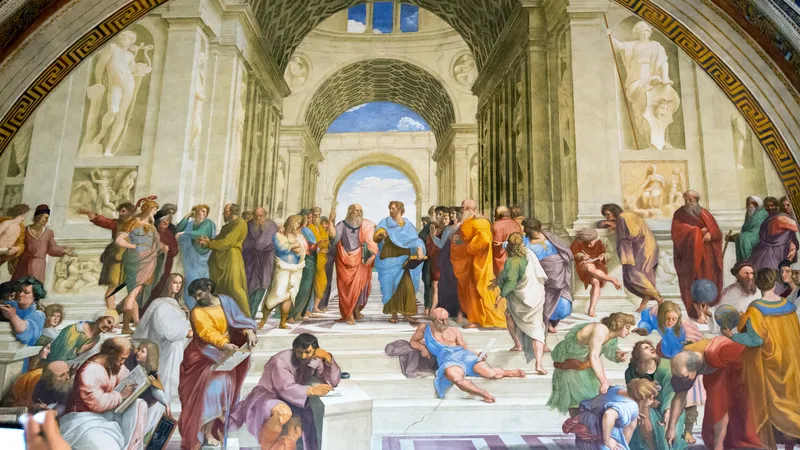
School of Athens (culutre & location)
High Renaissance; Vatican, Rome, Italy

School of Athens (creator, date, & material)
Rafael; 1500-1511 CE; fresco
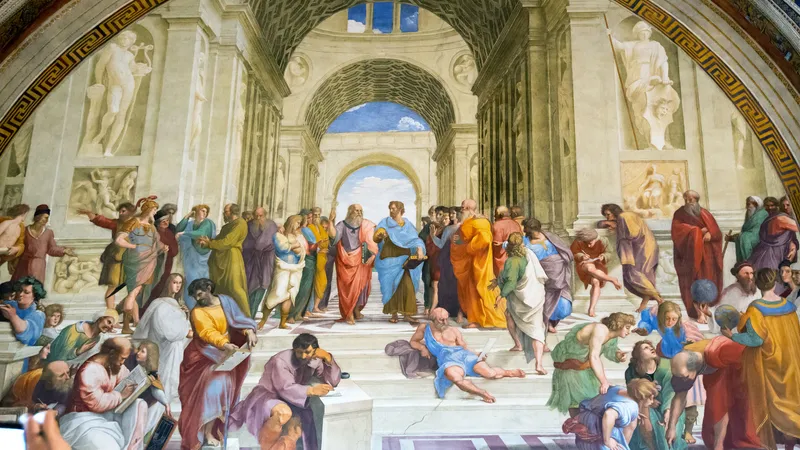
School of Athens (use & facts)
represetation of Neo-Platonism
perfect High Renaissance fresco
Greek Philosophers with portraits of Leonardo, Michelangelo, & Rafeal (Neo-Platonism)
sculptural quality, idealized & graceful individual bodies
grouped in architectural setting
balance & composition with vanishing point between heads of Plato & Aristotle
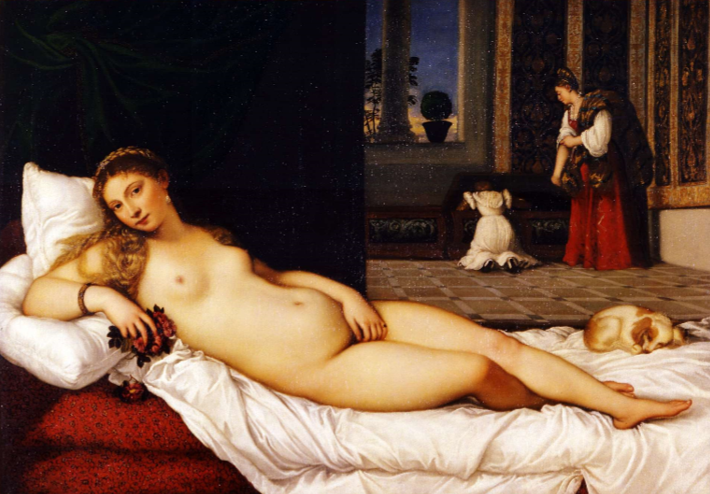
Venus of Urbino
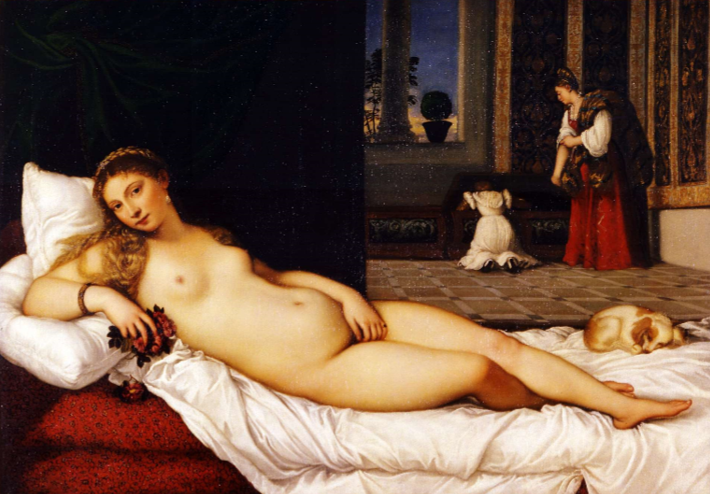
Venus of Urbino (culture & location)
High Renaissance; Venice, Italy
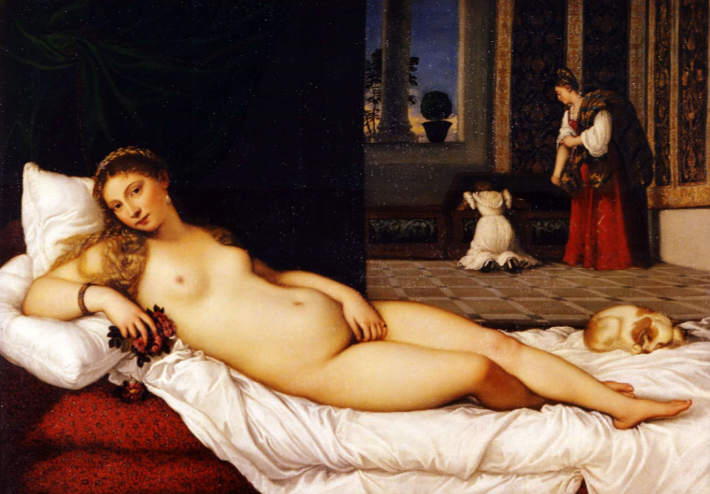
Venus of Urbino (creator, date, & material)
Titian; 1536 CE; oil on canvas
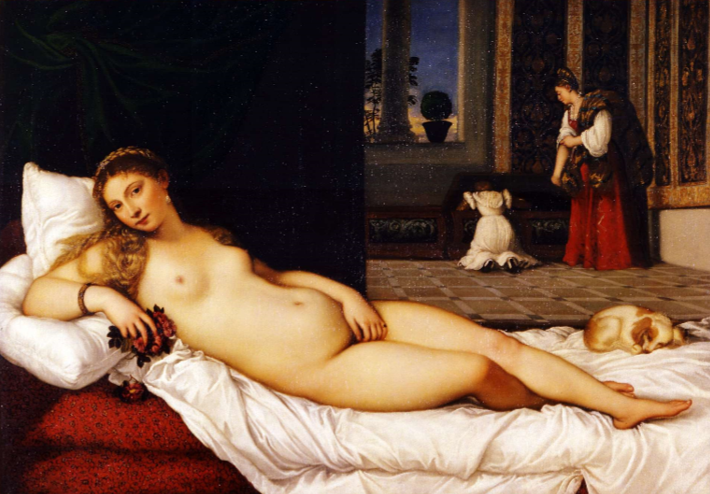
Venus of Urbino (use & facts)
wedding present from groom to wife (detailing her marital duties)
Venus inside a Renaissance palace
Venus looks you in the eye
model for other famous paintings
symbolism: dog = fidelity, maid & child = motherhood, nudity = obligation of wife
Titian = deep color (titian red)
Venetian Renaissance = sensuous figures, soft light, ideal/Arcadian setting
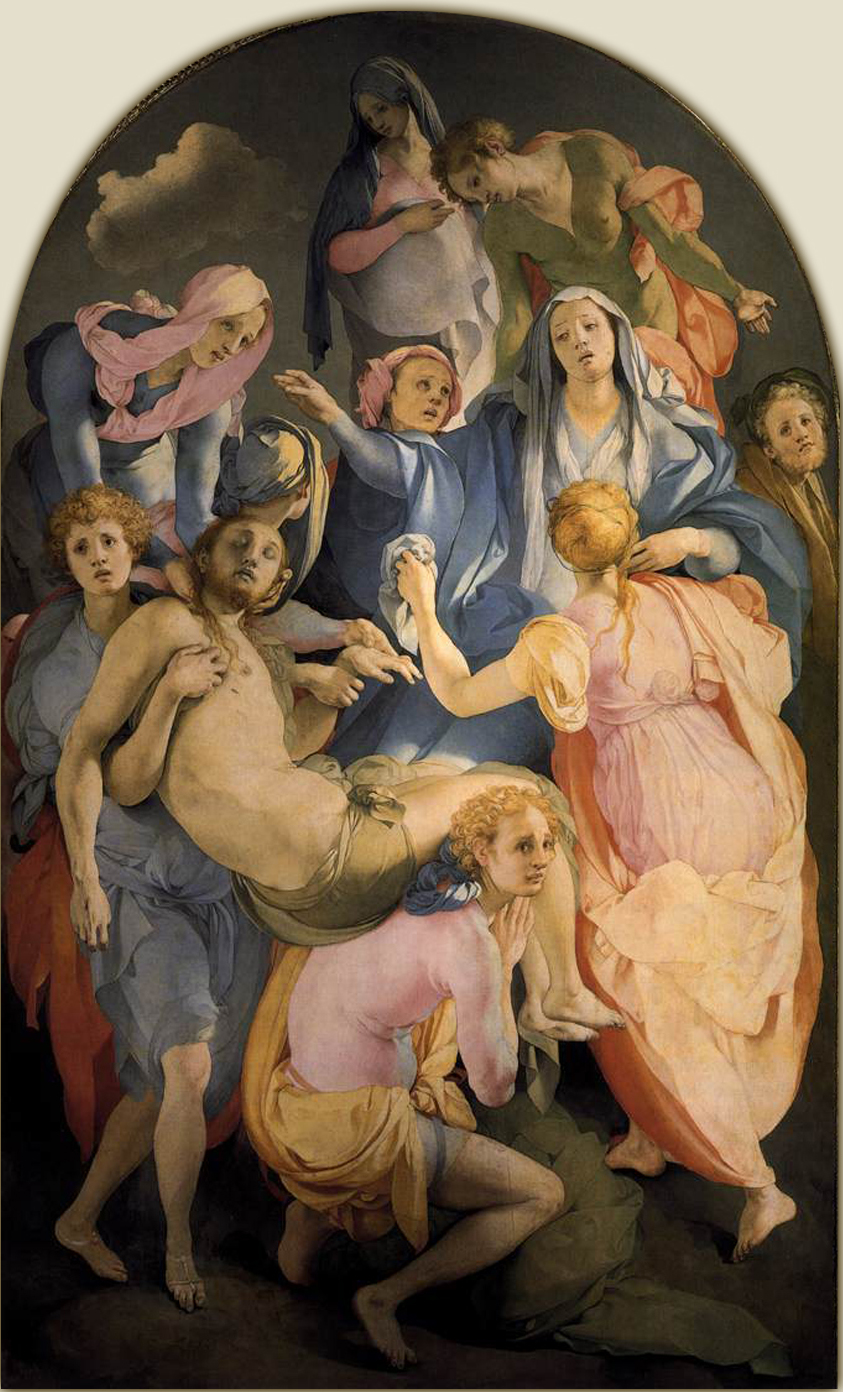
Entombment of Christ
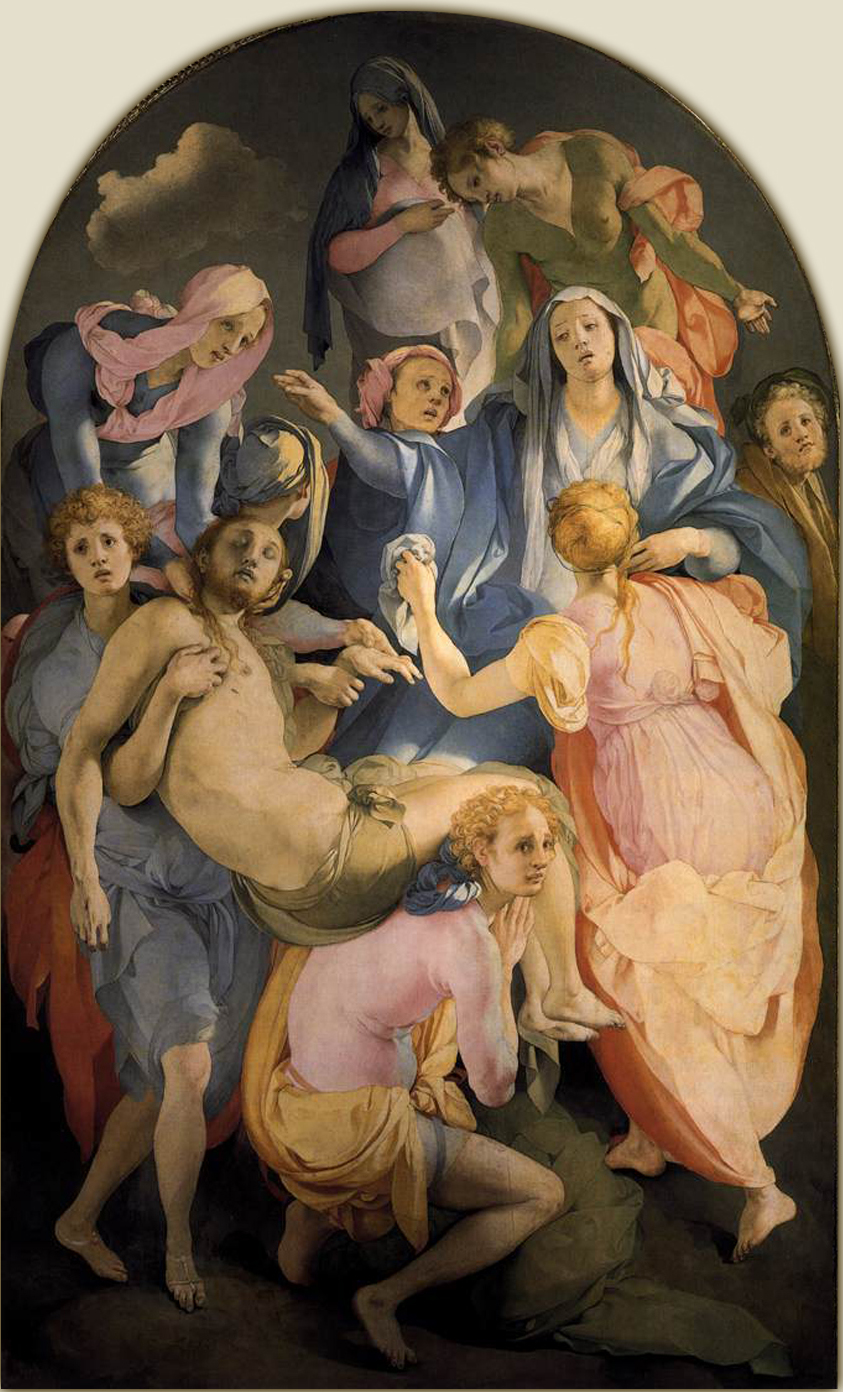
Entombment of Christ (culture & location)
High Renaissance; Florence, Italy
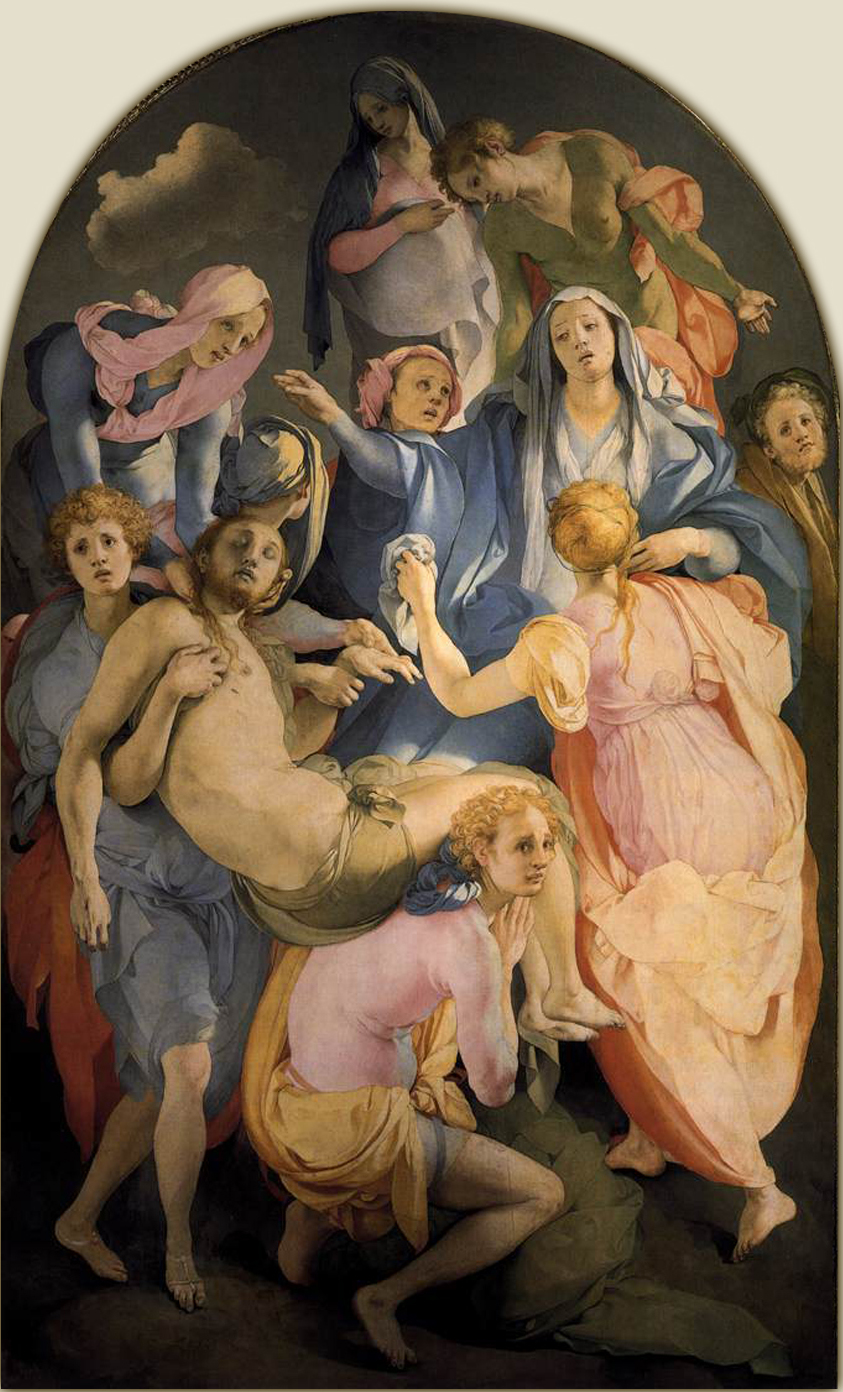
Entombment of Christ (creator, date, & material)
Jacobo Pontormo; 1538 CE; oil on canvas

Entombment of Christ (use & facts)
triptych for personal prayer
mannerism (stylized bodies, limp) – opposite of Renaissance
just figures, packed with people
no depiction of cross (deposition or entombment of Christ?)
unnatural body position of figure in left foreground
no place for eye to rest
constant movement
figures have no weight & over exaggerated emotions
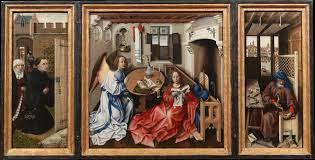
Merode Altarpiece (Annunication Triptych)
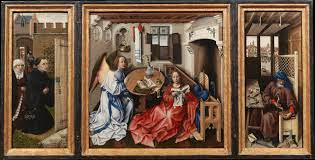
Merode Altarpiece (Annunication Triptych) (culture & location)
Northern Renaissance; Netherlands
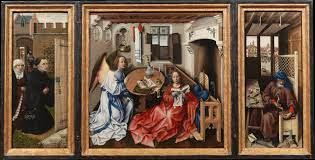
Merode Altarpiece (Annunication Triptych) (creator, date, & material)
Ropert Campin; 1426 CE; oil on panel

Merode Altarpiece (Annunication Triptych) (use & facts)
Triptych for personal prayer
Campin = Master of Flamalle
religion in everyday settings, inside a Flemish house
donors on left & mini-angel brings message
Mary on the floor (humility) with a star-like dress reading Old Testament (NT on table)
Joseph makes mousetrap to catch the devil
lilies show Mary’s purity
undefined vanishing point
attention to detail (new with use of oil paint)

Arnolfini Portrait
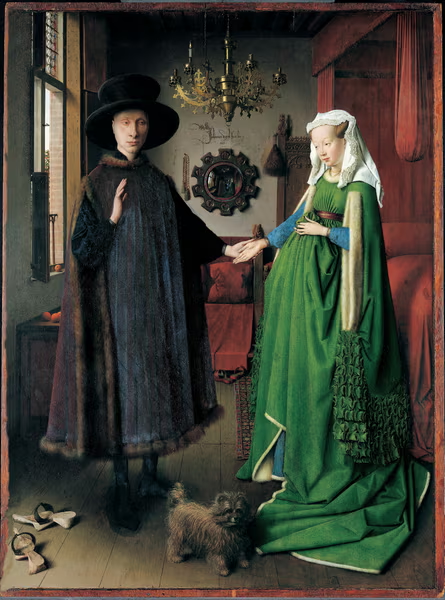
Arnolfini Portrait (culture & location)
Northern Renaissance; Bruges, Netherlands
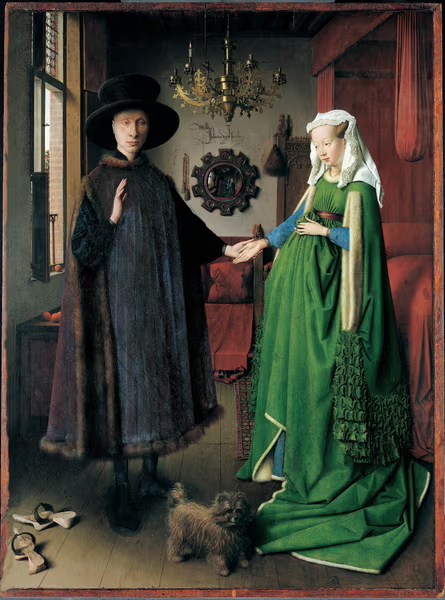
Arnolfini Portrait (creator, date, & material)
Jan van Eyck; 1434 CE; oil on oak

Arnolfini Portrait (use & facts)
perhaps memorial portrait for dead wife
details show wealth of clothing
ATTENTION TO DETAIL
mirror with stations of the cross
woman is not pregnant, its just folds of dress
signature of painter on wall
reflection of painter in mirror
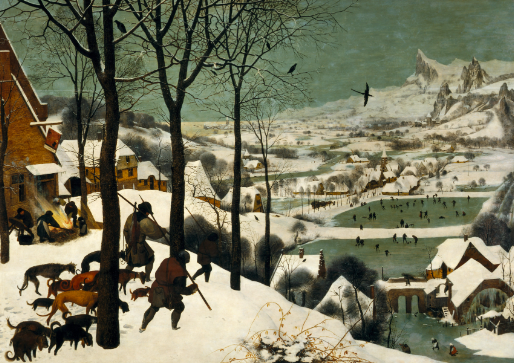
Return of the Hunters
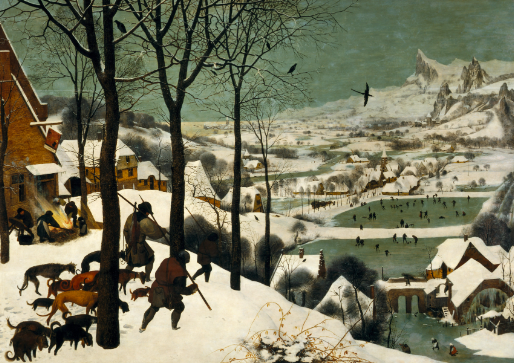
Return of the Hunters (culture & location0
Northern Renaissance; Netherlands

Return of the Hunters (creator, date, & material)
Pieter Bruegel; 1565 CE; oil & tempura on wood
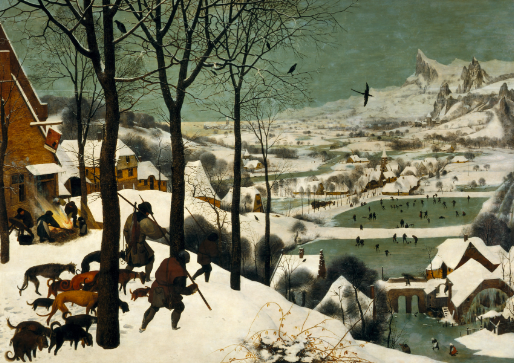
Return of the Hunters (use & facts)
series of paintings representing months
aka Hunters in the Snow
attention to detail
high horizon ling with strong diagonals & alpine (the Alps) landscape
figures are types, not individuals
painting is still
hunters discouraged, dogs are thin, heads down
mood changes in second plane with winter activities (skating)
limited color palette unified spatial planes of the painting
use of repeated colors pushes & pulls between fore-, middle, and background
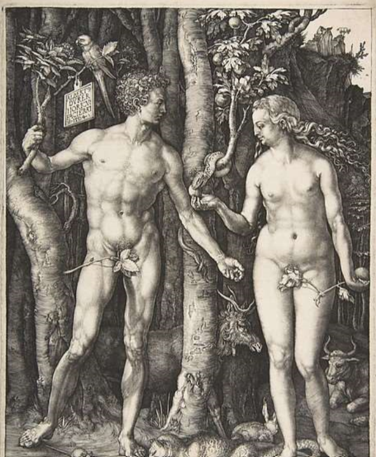
Adam and Eve
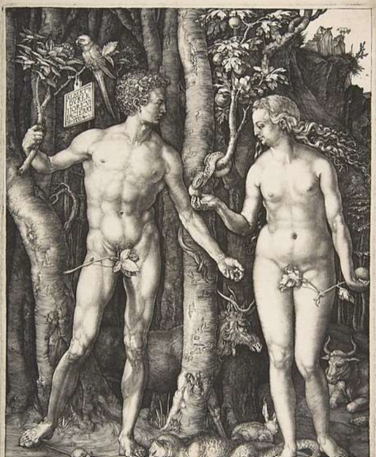
Adam and Eve (culutre & location)
Northern Renaissance; Nuremburg, Germany
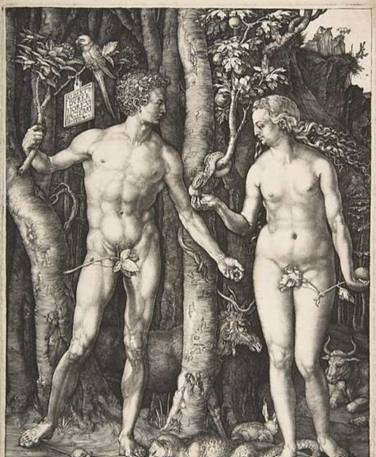
Adam and Eve (creator, date, & material)
Albrecht Durer; 1504 CE; engraving

Adam and Eve (use & facts)
Introduce German public to classical forms in art (Greco-Roman Renaissance influence)
Adam & Eve in German fairy tale forest
animals all get along
Italian influence = contrapposto with heads twisted to one other
attention to detail
Durer invented “artist as celebrity”
used print making to sell his brand

Isenheim Altarpiece

Isenheim Altarpiece (culutre & location)
Northern Renaissance; Isenheim (eastern), France
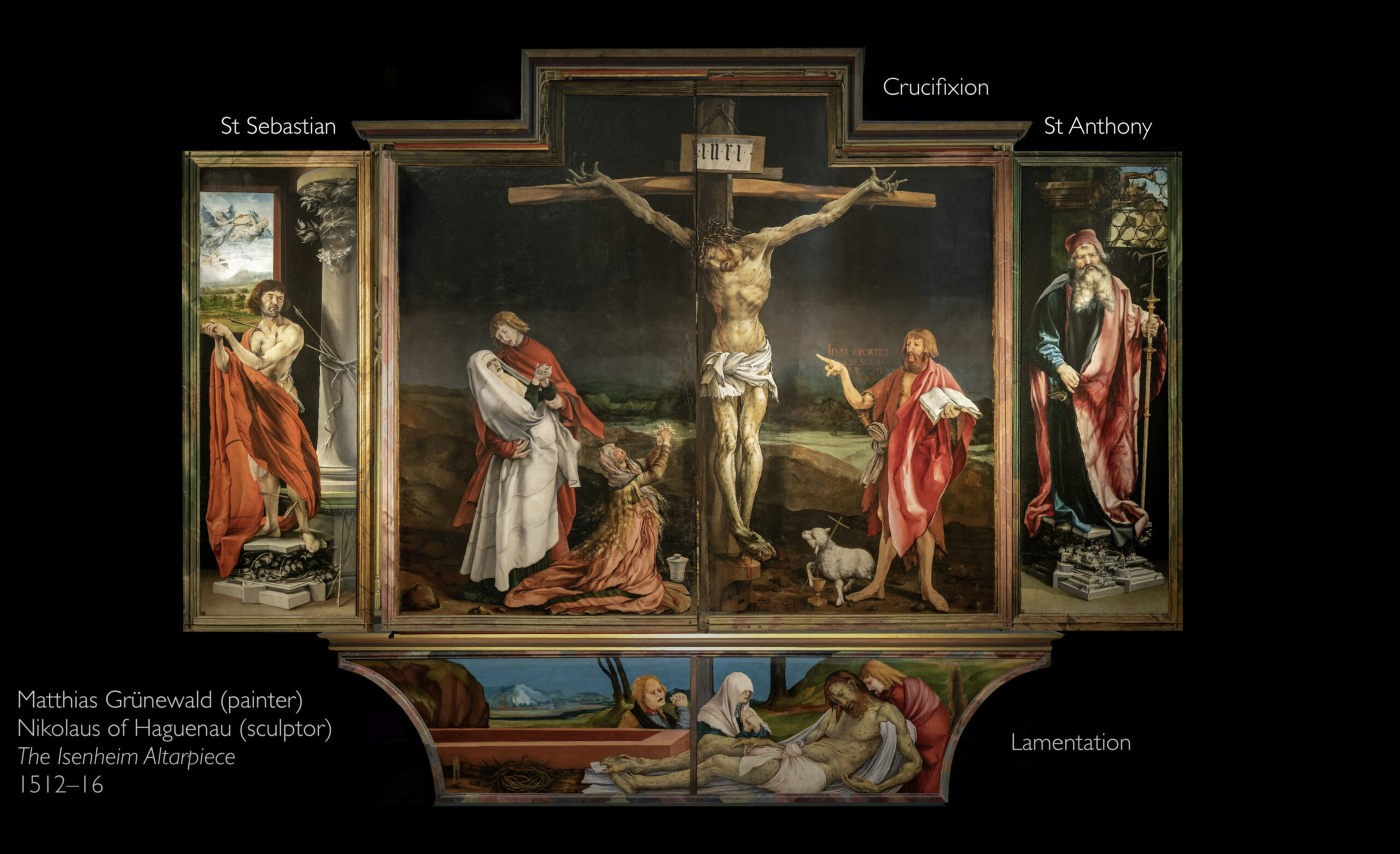
Isenheim Altarpiece (creator, date, & material)
Matthias Grunewald; 1512-1516 CE; oil on panel

Isenheim Altarpiece (use & facts)
hospital decor
View 1: crucifixion = dark background, decomposing flesh, arms torn from sockets
Christ reminiscent of patients from the hospital it was located at being treated for St. Anthoy’s fire disease
Mary dressed as nuns (worked with sick)
View 2: Christ has amputated limbs & rises from the dead on the right in Marianist garden
HUNG IN HOSPITAL WHERE PEOPLE WERE TREATED FOR DISEASE
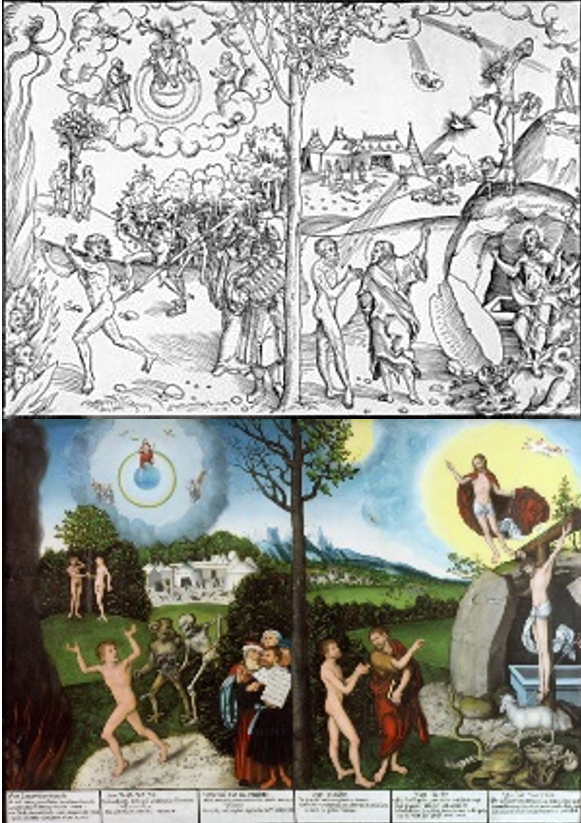
Allegory of Law and Grace
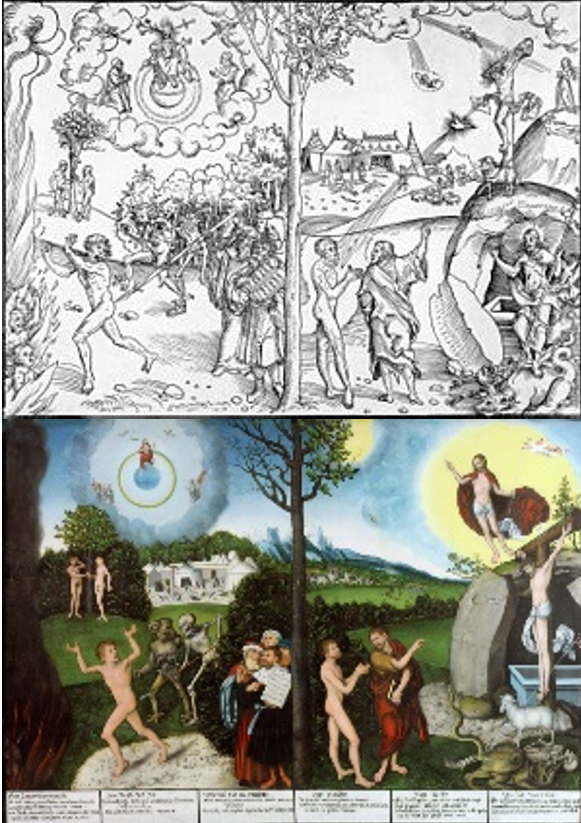
Allegory of Law and Grace (culture & location)
Northern Reniassance; Germany
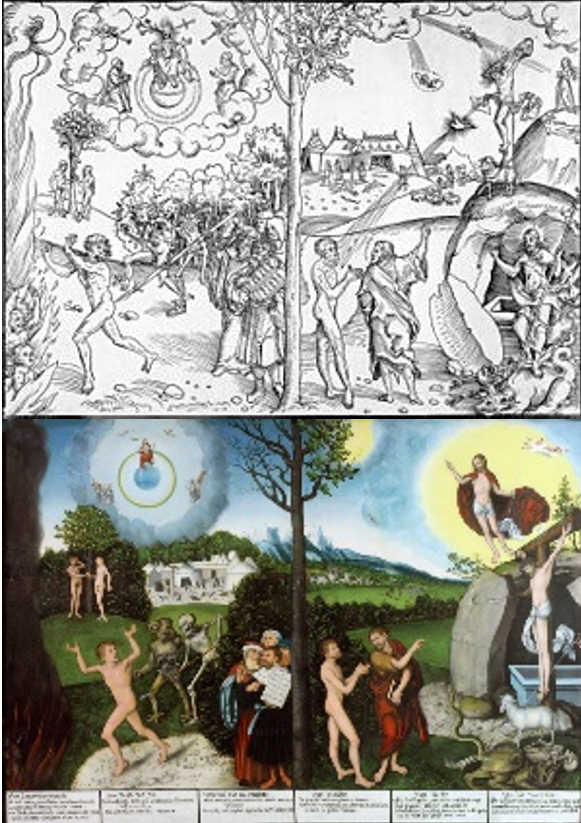
Allegory of Law and Grace (creator, date, & material)
Lucas Cranach; 1530 CE; woodcut & letter press

Allegory of Law and Grace (use & facts)
support for Protestant belief that faith alone saves
Reformation work symbolically pointing out how faith alone with save you
made with Martin Luther’s consent
aka Law & Gospel
made into woodcut for easy, cheap, & accessible reproduction to be spread around Europe
depicts faithful saved by God’s grace & studying the Bible
law of Moses is not enough